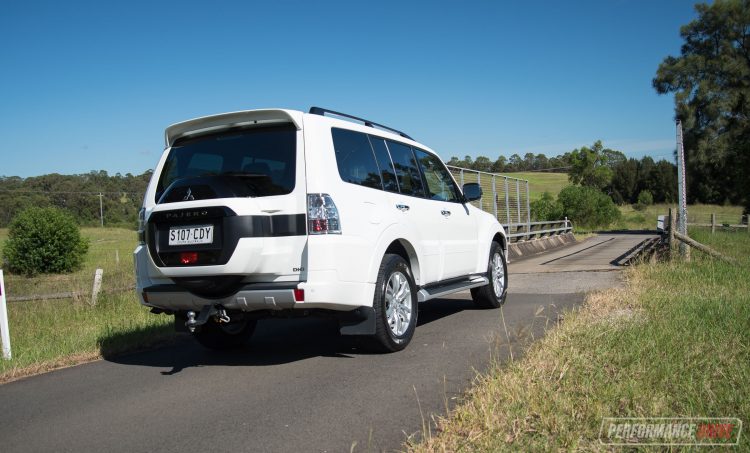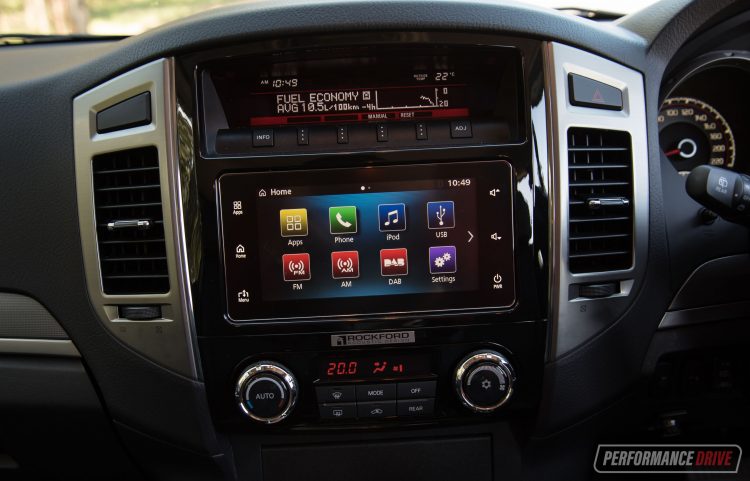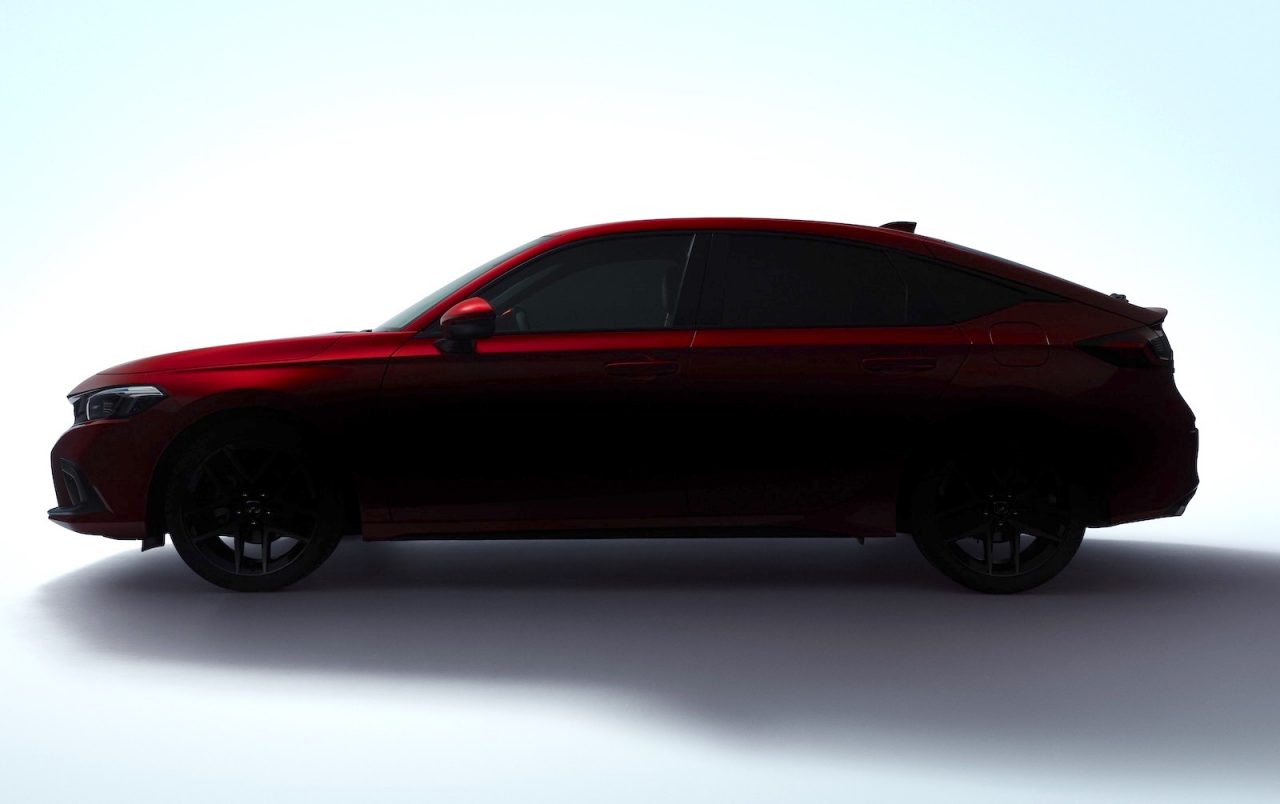There are two ways to look at the 2021 Mitsubishi Pajero: a dated, heavy, uneconomical off-road wagon, or a down-to-earth, 7-seat fourbie that will venture deeper into the bush than most new-age SUVs can.
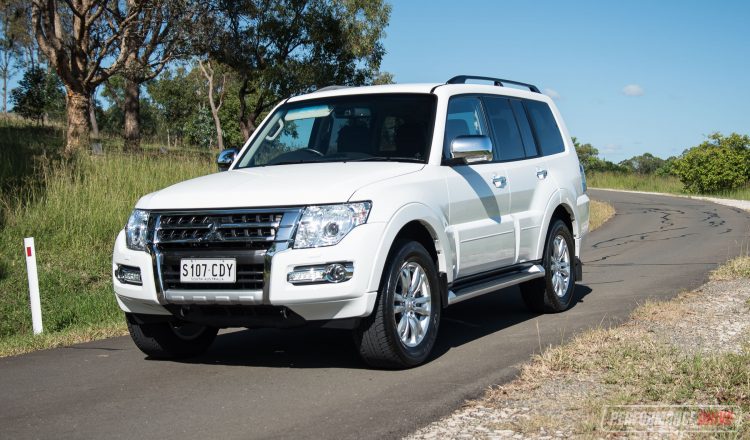
Yes, the current generation has been out since 2006. That’s right, 15-years! But it attracts the type of buyer that may not be interested in the latest and greatest technology trends. We should also mention the humble Pajero – in its current form – will sadly be taking its tired boots off for good in 2021. So, we thought we’d give it one last hurrah while stocks last.
Buyers have flocked to it over its long life because it is one of only a few hardcore SUVs that uses a monocoque structure combined with independent suspension all around. Most competitors use a ladder-frame and a live axle rear (or front and rear) suspension layout. We’ll explain more on that later.
The lineup for the 2021 send-off starts with the appropriately-named GLX Final Edition, then the GLS Final Edition, and the Exceed Final Edition at the top. The Final Edition label gives all models a cargo liner and floor mats, a tinted bonnet protector, and branded leather compendium. This example here is the regular MY2021 GLS.
All variants are fitted with the same engine. It’s a 3.2-litre four-cylinder turbo-diesel, and in this case mated to a five-speed automatic transmission with dual-range 4×4. Pricing commences at $54,990, and peaks at $63,990 for the Exceed Final Edition. This GLS starts from $59,990.
2021 Mitsubishi Pajero GLS – THE SPECS
[column width=”47%” padding=”6%”]Engine: 3.2-litre turbo-diesel four-cylinder
Output: 141kW@3800rpm / 441Nm@2000rpm
Transmission: Five-speed auto
Drive type: Part-time four-wheel drive, locking centre and rear diff
Wheels: F & R: 18×7.5, 265/60
ANCAP: Five stars (tested in 2011)
Kerb weight: 2330kg
Power-to-weight: 16.52:1 (kg:kW)
Official fuel economy: 9.1L/100km
Economy during test: 10.2L/100km[/column] [column width=”47%” padding=”0″]Fuel capacity/Type: 88L/Diesel
Power efficiency: 15.49kW:L/100km
0-60km/h: 4.82 seconds*
0-100km/h: 10.92 seconds*
60-110km/h: 8.07 seconds*
1/4 mile: 17.75 seconds at 128.0km/h*
Max acceleration: 0.623g
100-0km/h braking: 3.41 seconds at 41.93 metres*
Max deceleration: -1.081g
Decibel at idle: 49*
Peak decibel at 60-100km/h: 82*
Priced from: $59,990[/column][end_columns]
* Figures as tested by PerformanceDrive on the day. Factory claims may be different
2021 Mitsubishi Pajero GLS – THE PACKAGE
The Mitsubishi Pajero is quite a recognisable 4×4. Mitsubishi’s current design language has now moved on from the Pajero’s traditional tall wagon shape and spare wheel on the side-opening tailgate. The inside is primitive in its features and layout. There is a monochrome vehicle info screen, manual controls and buttons, and hard-wearing plastics that don’t attempt to feel elegant. And that might be exactly what some buyers want – rough and ready, and no confusing bells and whistles.
We find the seats provide adequate levels of comfort. They offer height adjustment in the front but no lumbar adjustment. You do get that high-riding, above-the-road feeling, if that’s what you like. Oddly, there is no steering wheel telescopic adjustment. Only tilt adjustment.
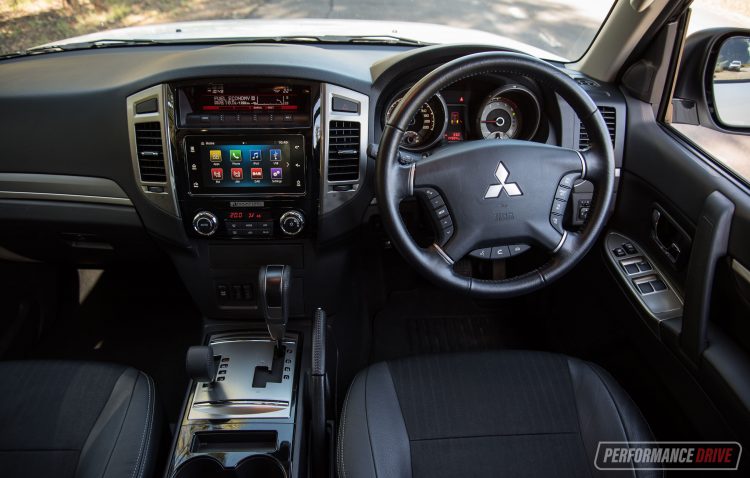
There is plenty of room in the front, but the second row caught us by surprise with less legroom than expected for a large SUV. The seat backrests are adjustable in their tilt, but they are not on rails to increase legroom. Because there is lots of heavy-duty mechanics underneath and plenty of ground clearance, the floor is higher than in other SUVs. Therefore, you might find your knees sit higher than your hips, and your feet won’t slide under the front seats.
The third row is a handy standard feature, perfect for kids or short trips with adults. When the third row is not in place the boot is a huge 1789 litres – just short of the Toyota Prado’s 1833 litres.
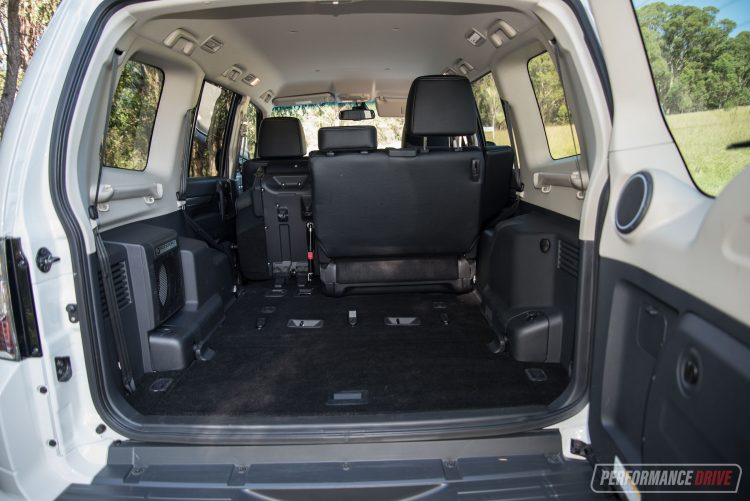
All Pajeros come with basic cruise control, a reversing camera, a six-speaker sound system with digital radio, Bluetooth connectivity, HDMI input, Android Auto and Apple CarPlay, auto dipping high beam and auto levelling headlamps with washers, auto climate control with rear air flow, LED daytime running lights, front and rear fog lamps, and heated and folding power door mirrors.
Other important features important to this segment are a full-sized spare wheel, diff lock, auto locking wheel hubs, front and rear stabiliser bars, independent front and rear suspension, side steps, roof rails, a front skid plate, and Mitsubishi’s Super Select II drive mode selection system.
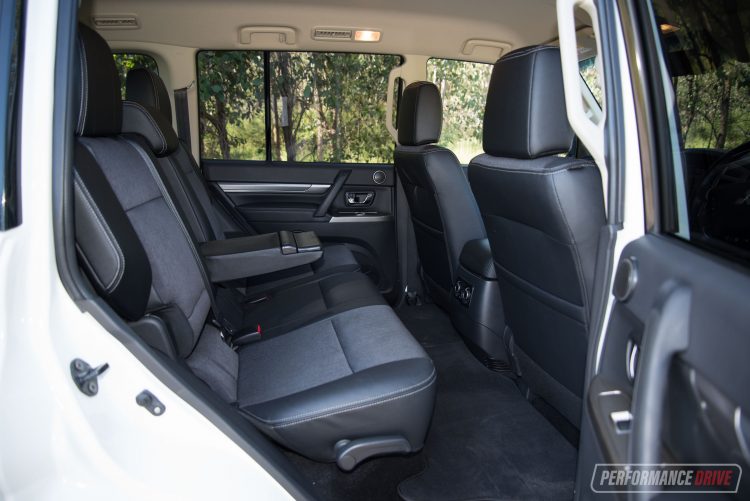
The GLS gains rear parking sensors, automatic wipers and headlights, heated and power front seats, 18-inch alloy wheels (up from 17 in the base GLX), and an upgraded Rockford sound system with 12 speakers. The top spec Exceed adds an electric sunroof with tilt and slide, partially leather seats, a security alarm with siren and sensor, a chrome side protection strip, a chrome windscreen surround strip, and aluminium brake and accelerator pedals.
Sadly, there are no safety features that have almost entirely become standard on most other new vehicles. Things like forward or reverse collision emergency braking with pedestrian detection, lane keeping aid, blind-spot sensors, distance-controlled cruise control, and rear cross-traffic alert are non-existent here. The Pajero did score a five-star ANCAP safety rating, but that was back in 2011 when tests were not as tough.
Servicing intervals are required every 15,000km or 12 months, and the vehicle is covered by a class-leading 10-year, unlimited kilometre ‘Mitsubishi Diamond Advantage’ warranty (if you service it at a Mitsubishi dealer).
2021 Mitsubishi Pajero GLS – THE DRIVE
Under the bonnet the last remaining engine in this generation is a 3.2-litre diesel as mentioned. It produces a modest 141kW of power and 441Nm of torque. Being a 2300kg 4×4 means that the large four-pot could do with a little more power, or an extra gear ratio. Especially when it comes to overtaking on the freeway or zipping around the city. And that peak output does not come to play until a rattly 3800rpm. Torque levels feel strong for the hills. It pulls away and can hold onto the higher gears confidently.
If towing is part of your lifestyle, the Pajero offers a braked capacity of 3000kg. This is more than the Toyota Prado’s 2500kg, equal to the Isuzu MU-X, but short of the significantly more expensive Toyota LandCruiser’s 3500kg.
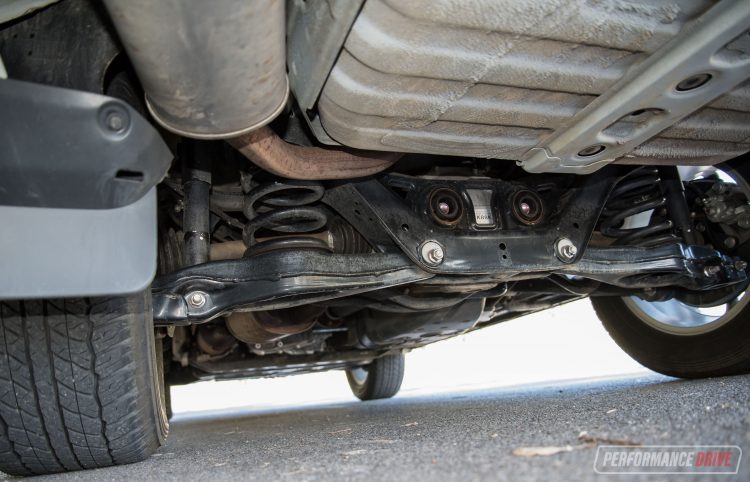
Official fuel consumption figures rate the old timer at 9.1L/100km. Our average floated around 10.2L/100km. There’s no sugar-coating the heavy Pajero’s high fuel consumption, except that it is greatly affected by the type of driving you do most. In the city, it can easily climb into the 11s and on the freeway, it can dip into the 8s. The fuel tank holds 88L, which translates to a theoretical average range of 967km.
Although the Pajero conveys truck-like strength, the steering behaves comfortably at freeway speeds. It is easy to keep in the lane and maintain a nice cruising stance. This is helped by the independent suspension. And having independent coil springs all round means on-road handling and comfort is very good for a heavy-duty off-roader.
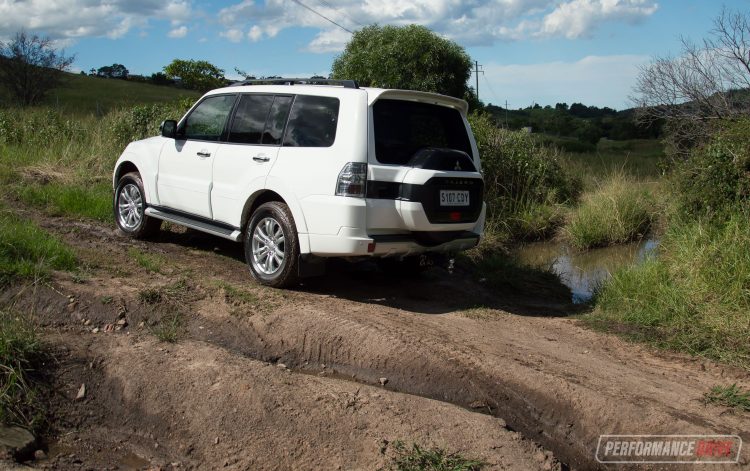
True, rugged off-road performance is demonstrated with some good geometry numbers. Ground clearance measures in at 235mm (5mm more than the Isuzu MU-X and 10mm more than the Ford Everest), and approach and departure angles are creditable, at 36.6 degrees and 25 degrees, respectively.
All variants are fitted with Mitsubishi’s ‘Super Select II’ 4×4 system. You have the everyday 4×2 mode or high range 4×4 mode, which can be selected on the go at up to 100km/h, offering a front-to-rear torque split of up to 33:67. And then there is low range and diff locks (centre and rear) for really tricky conditions. With this, the Pajero is capable of having have some serious fun in the dirt or snow.
2021 Mitsubishi Pajero GLS – THE VIDEO
2021 Mitsubishi Pajero GLS – THE VERDICT
There is a 4×4 market out there that demands a solid and durable 7-seat SUV that does without all the bells and whistles – those looking for an actual off-road vehicle and not a pretender. There is also a loyal Pajero fan-base that will be wiping a tear away seeing this Pajero go into retirement. For them, the Final Edition might create a last-minute rush to swipe the remaining stock.
As for the rest of the market, we will respectfully say farewell and thanks for being here, as we hop into our modern, automated, and fuel-efficient SUVs that will never leave the tarmac anyway. Let’s just hope the next Pajero – if there is one – doesn’t fall into that trap.
[column width=”47%” padding=”6%”]PROS:
– Off-road capability
– User-friendly technology
– Handles corrugated roads better than most ladder-frame SUVs
– 12-speaker sound system with dedicated subwoofer
– Big and tall cabin offers good visibility and boot access
[/column] [column width=”47%” padding=”0″]CONS:
– Too inefficient at the bowser
– Rear seat surprisingly poky for a large SUV, high floor means your knees sit high
– Antiquated trip info screen and dash
– Third row system requires some muscle, compared with some others[/column][end_columns]
As always, if you’re thinking about buying a new car don’t forget to click here to speak with our car buying specialists.
